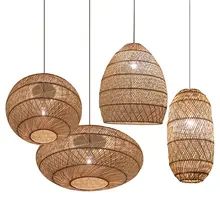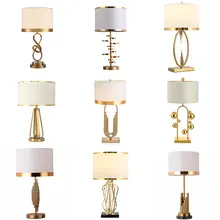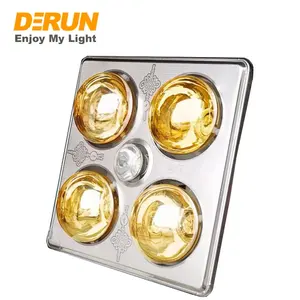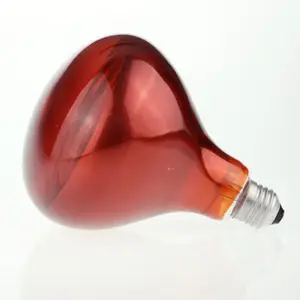A heat bulb is an essential device designed to provide both light and heat, serving a multitude of applications across various industries. These bulbs are particularly valuable for their dual functionality, offering not just illumination but also warmth, which is indispensable in settings that require controlled temperature conditions.
Types and Characteristics of Heat Bulbs
There are several types of heat bulbs, each with unique characteristics to serve specific purposes. Infrared bulbs are designed to emit a gentle, deep-penetrating heat, which is beneficial for muscle therapy and relaxation. Heat lamp bulbs are commonly found in food service to keep dishes at optimal temperatures. Heat light bulbs are often used in bathroom fixtures to provide both illumination and warmth. Exterior heat lamps are robust and designed for outdoor use, providing heat in open spaces. For agricultural use, heat bulbs for chickens are crafted to support the health and growth of poultry by maintaining the necessary warmth within coops. Each type of bulb is engineered to deliver a specific wavelength and intensity of heat to match its intended environment.
Structure and Operation of Heat Bulbs
The structure of a heat bulb is a testament to the sophistication of its design. At the heart of the bulb is the filament or ceramic element, which is responsible for generating heat. This component is encased in a durable glass or quartz envelope that can withstand high temperatures while allowing heat and light to pass through. Some bulbs are coated with a reflective layer to direct the heat in a specific direction. The base of the bulb, typically made of aluminum or another metal, ensures a secure fit into light fixtures and conducts electricity safely into the filament. When the bulb is switched on, electricity heats the filament, which in turn radiates heat and light into the surrounding area.
Materials and Benefits in Heat Bulbs
The materials used in the construction of heat bulbs are chosen for their durability and heat resistance. Glass and quartz are common materials for the envelope because of their ability to withstand high temperatures without degrading. Quartz glass, in particular, is valued for its clarity and strength. Aluminum alloy bases are used for their excellent electrical conductivity and resistance to corrosion. These materials ensure that the bulbs are not only effective in their function but also safe and long-lasting. The choice of these materials reflects a commitment to quality and efficiency in heat bulb design.
Business Usages and Applications of Heat Bulbs
Heat bulbs are versatile tools that create business value across various industries. In the hospitality sector, heat lamps in bathrooms elevate guest comfort and prevent dampness. In food service, they keep meals at the perfect temperature, enhancing customer satisfaction. In agriculture, heat bulbs for chickens are vital for maintaining the health of poultry, directly impacting productivity and profitability. In retail spaces, outdoor heat lamps can extend shopping hours and enhance customer experience by providing warmth in colder seasons. Each application of heat bulbs is a strategic investment, contributing to operational efficiency and customer satisfaction.
Functions and Tasks of Heat Bulbs
Heat bulbs are designed to perform specific functions depending on their application. A heat lamp for chicks functions to simulate the warmth of a mother hen, crucial for the survival of hatchlings. In therapeutic settings, infrared bulbs function by penetrating deep into tissues to relieve pain and improve circulation. In commercial kitchens, heat lamp bulbs function to keep food warm without drying it out, preserving quality until service. These specialized tasks are integral to the operations of businesses that rely on controlled heat delivery.
Features and Unique Selling Points of Heat Bulbs
The distinct features of heat bulbs include their ability to provide consistent heat, their energy efficiency, and their longevity. Some bulbs are designed to be eco-friendly, reducing the carbon footprint of businesses that use them. Features such as compatibility with dimmer switches allow for adjustable heat settings, adding to their versatility. The unique selling points of these bulbs often lie in their specialized design, such as heat lamps for bathrooms that resist moisture or exterior heat lamps that can withstand the elements, setting them apart from competitors.
Benefits and Positive Outcomes of Heat Bulbs
The benefits of using heat bulbs are manifold. They provide a controlled source of heat that is safe and reliable, with no risk of open flames. This can lead to a safer working environment in various settings. The energy efficiency of modern heat bulbs also translates to cost savings for businesses, while their long service life reduces the need for frequent replacements. For animal husbandry, the use of heat bulbs can result in healthier livestock, directly impacting the bottom line.
How to Use, Choose, Clean, Maintain, and Install Heat Bulbs
Effective operation of heat bulbs starts with choosing the right bulb for the specific need. Consider the wattage, the type of heat required, and the compatibility with existing fixtures. Installation is typically straightforward, involving screwing the bulb into a suitable fixture. Maintaining these bulbs involves regular cleaning to remove dust and debris, ensuring optimal performance. When cleaning, it's important to turn off the power and allow the bulb to cool down to avoid injury. Regular checks for any signs of wear or damage can prolong the life of the bulb.
Target Audience and Meeting Needs with Heat Bulbs
The target audience for heat bulbs is diverse, ranging from commercial buyers in the agricultural sector looking for chicken heater lights to hospitality managers in search of warm bulb lights for guest comfort. The needs of these audiences are met by providing a range of bulbs that vary in heat intensity, energy consumption, and durability. By understanding the specific requirements of each audience, manufacturers can tailor their products to meet these needs, ensuring customer satisfaction and loyalty.
How to Choose the Right Heat Bulb?
Choosing the right heat bulb requires consideration of the specific needs of the environment where it will be used. For instance, a heat lamp outside must be robust enough to handle weather variations, while a heat bulb for bathroom use must be safe for damp conditions. The wattage, size, and compatibility with dimmer switches are also important factors to consider. It's essential to select a bulb that not only fits the physical space but also provides the appropriate level of heat for the intended purpose.
How to Install and Maintain Heat Bulbs?
Installing a heat bulb is usually as simple as screwing it into the appropriate fixture. However, ensuring that the fixture can handle the bulb's power output is crucial for safety. Maintenance involves regular cleaning to prevent dust accumulation, which can affect the bulb's performance. It's also important to check for any signs of damage or wear and replace the bulb as needed to maintain safety and efficiency.
What Are the Safety Precautions When Using Heat Bulbs?
Safety is paramount when using heat bulbs. It's essential to ensure that the bulb is not in contact with flammable materials and that the fixture is rated for the bulb's power output. In settings with live animals, such as using heat bulbs for chickens, the bulb should be placed out of reach to prevent contact burns. Following these precautions will help prevent accidents and ensure a safe environment for both people and animals.






































 浙公网安备 33010002000092号
浙公网安备 33010002000092号 浙B2-20120091-4
浙B2-20120091-4